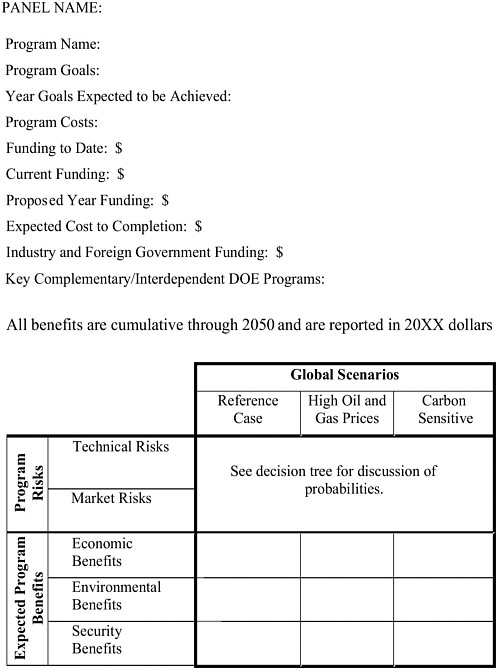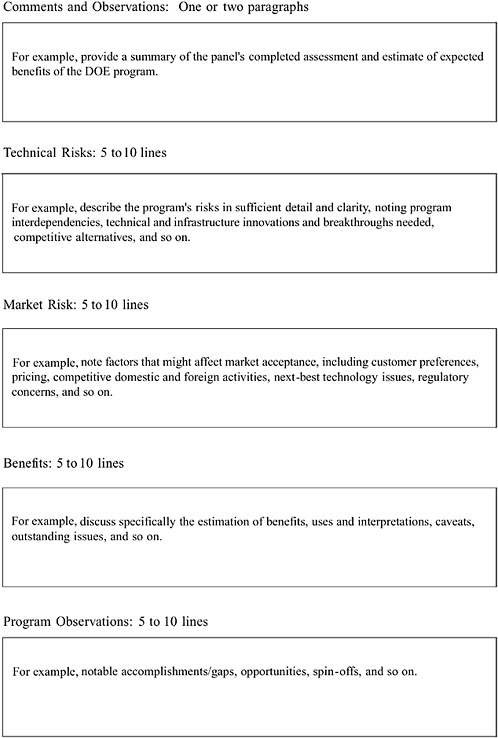J
Expected Benefits Results and Report Guidance
OVERVIEW
All panels will report their results consistently using the benefits results template discussed in this appendix (see Figure J-1). The format requires that each panel present similar information about the respective program under review and its findings so that users of the results can make informed program and funding decisions. The benefits results template consists of three sections. The first section lists important program information provided by the Department of Energy (DOE). The second section presents the panel’s results matrix of the expected benefits of the program using the committee’s methodology applied to DOE’s expectation of program outcomes as well as the alternative outcomes anticipated by the panel. The third section of the template provides the panel’s findings and conclusions and expert opinions regarding the application of the methodology to the program.
DOE PROGRAM INFORMATION
The first section of the benefits results template will provide summary information characterizing the DOE program. This information will include an identification of the program goals; funding, including outside funding; and the program’s critical interdependencies with other DOE program efforts. This information is provided directly by DOE.
RESULTS MATRIX
The results matrix in the template is for presenting the panel’s views of the program’s technical and market risks and the expected benefits of the research and development (R&D) program. Market risks reflect the panel’s expert opinion of the program’s market acceptance assuming that the goals have been met. Assessing the market risk includes consideration of price, infrastructure development and support, ease of use, competition from other technologies or innovations, time, and end-user preferences. In the committee’s decision tree framework, there is no single point estimate of technical or market risk, owing to the many possible outcomes. The quantitative estimates of probability are recorded in the decision tree, as discussed in Chapter 3, whereas the results matrix should be annotated with a discussion of the key factors that contribute to the technical and market risk.
The benefits estimated by the panel represent an expected value benefit. This is calculated by adjusting the benefits that DOE assumes will be accrued if the program goal is met for the technical and market risks identified by the panel. Figure J-1 provides expected benefits for three scenarios to reflect a bounding of benefits for three possible future states.
PANEL COMMENTS
The panel’s opinion and quantification and discussion of the risks are provided in the third section of the template in Figure J-1. The information required to be included in this section is listed in the template itself. The panel must complete the matrix using sufficient clarity and transparency to allow readers and potential users of the matrix to make informed and reasoned decisions about future goals, funding levels, and expected benefits. The template should be used by all panels to ensure consistency in reporting, use, and interpretation.
NOTE: This appendix presents the guidance to be used by the expert panels in preparing the results of their evaluations of DOE program benefits.





